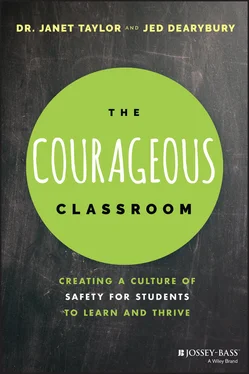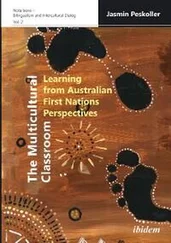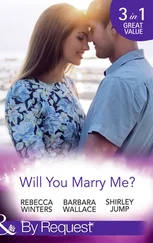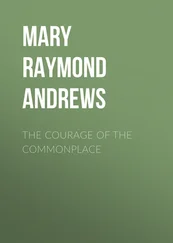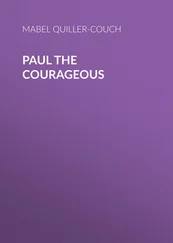School shootings today create similar fears and feelings for students and their parents. There is a constant 24-hour exposure to news across a variety of platforms. Smartphones capture terror in real-time and are easily shared in case one missed it. Between actual exposure and drills for a shooter, children report that the majority of US students worry that a shooting could happen at their school, and so do their parents (Graff 2018). In How the Mind Works , Steven Pinker writes, “Fear is an emotion of anticipation that is triggered when a situation that is at risk for our safety and or the safety of others is perceived. Emotions serve a variety of functions. Our desires and beliefs are information for our brain.” He continues to say that, “Fear is the emotion that motivated our ancestors to cope with the dangers they were likely to face” (Pinker 1999).
As important as fear is, surprisingly, we don't experience it as often as we might think (Whalen 2007). Think of how many times you have literally been “scared to death” not just afraid. It's probably not that many. Our experience has been that when people feel afraid in a situation, they are not always in touch with their own feelings of fear and may act defensively or angrily. For example, when we see a young person who is frequently agitating others and engaging in behavior that some would consider as aggressive or taunting, we see pain. Our first inclination is not to label, judge, or punish the behavior but to question, “What is driving it?”
The need to look beneath aggressive behavior and understand the underlying motives became apparent when I (Janet) was working as a part-time psychiatrist at Rikers Island and assigned to work with male juveniles. Rikers, at the time, was the largest jail in the United States. It spans almost 414 acres between the boroughs of Queens and Brooklyn.
Stopping at the first of many checkpoints is an intimidating process. You are held captive by a non-smiling officer, and asked for proof of identification, including an up-to-date car registration. Small talk is usually not reciprocated and any attempts at banal chatter is usually met with stone cold silence. I attended a thoroughly chilling orientation about how to think and act while a visitor, working at Rikers Island, making me worry if my presence there was worth it. Honestly there were many days when I wondered why I was. But deep down I knew.
Over my career, I have always worked with folks who have been marginalized. Being at Riker's taught me about the impact of trauma on behavior, and how trauma contributes to feelings of fear, anger, and hopelessness. My role, I would learn, was to unleash the individual potential and freeing power, for individuals involved in criminal justice to acknowledge past trauma and openly speak about their pain. Many of these patients of mine had never disclosed their pain, suffering, and trauma to anyone. Their behavior patterns would be labeled as criminal deviance without adequate understanding of the underlying root causes.
As I was working there part-time, I was assigned to different buildings, never knowing where I would end up for the day. The first time that I worked with the male adolescents, I was floored by how much I connected with each young man. They were mostly Brown and Black and would shift uncomfortably while waiting for our session, warily watching each other. Expecting negative attitudes, they had me at “Yes Ma'am” and “No Ma'am” while politely answering my questions. Their easy willingness to open up and talk was both compelling and heartbreaking. Telling me their life stories helped to make sense of their trauma as their words formed a consistent narrative about youth, abuse, low-resources, and peer pressure. Many were in for violent offenses, and I quickly learned that knowing a charge without knowing their past life experiences was meaningless. My job was to assist them in making sense of their own trauma and for them to relate it to their behavior. Hurt people hurt people and most of these young men had suffered emotional and/or physical abuse from someone in, or close to, their own household. Noticing my pain, I'll never forget what one Correction Officer said to me. He told me, “Doc, don't fall for their lies, these little m***********s will smile at you then kill you.” His words caught me off guard. I never saw these young men as threats to me; I was too busy trying not to be a threat to them.
The process of walking into Rikers was anxiety provoking. My thoughts would range from a fear of being attacked, (although I was never threatened by an inmate) to what if I beeped on the metal detector and I was arrested. Both my thoughts were irrational but felt real to me. Every time that I went to Rikers, my anxiety lessened because instead of focusing on what could happen, I changed my thoughts to being prepared if something did happen. I prepared for the worst, and actually found myself excited to talk to the inmates and assist them in making sense of their trauma.
When you are able to interpret your fear as excitement, change happens in your brain and your perspective shifts. Here's how. We have cells in our brain named pyramidal cells that are responsible for our guesses and conclusions. They feed our thinking and predictions to the amygdala and can influence our interpretation about the dangerousness of the outside world. The bottom line is this: as we create and narrate our own story, why not make it one of courage and triumph over fear? Being curious, committed to learning, and open to examining our experience lends to shifting from fear to courageousness.
The effects of trauma on children contributes to their inability to self-regulate and have healthy relationships much like it did for my criminal justice involved adolescents. The National Child Traumatic Stress Network in the United States reports that up to 40% of students have experienced or been witness to traumatic stressors in their lifetime (Brunzell, Waters, and Stokes 2015). Many children are not taught to question their fears in an effort to understand and dismantle them. As a result, they are in constant react or battle mode. In school classrooms, fear and trauma may present as disruptive, impulsive, defiant disorder, formally labeled as Attention-Deficit Disorder, Acute Stress Disorder, or even Bipolar Disorder and compromise learning because of frequent suspensions, failed grades, lower expectations, and suboptimal communication between teachers and students. Can you imagine how engaging and powerful these classrooms could be by flipping the switch on their trauma and fears and turning on courage and an enhanced understanding of themselves as adaptive beings?
Today, as I (Jed) type, it is Friday September 11, 2020. Nineteen years from the date that fear, trauma, and anxiety gripped our entire country. I, like most of you reading this, remember exactly where I was the moment our world changed forever on 9/11/2001. I was working at a school as rumors started to buzz around the school that morning about a plane crashing into the World Trade Center. I couldn't fathom what I was hearing. I assumed it was a Cesna or some other small plane that veered off course due to a pilot's medical issue or possibly even a suicide attempt. I was a news junkie and had heard of something like that happening before. I was disappointed I couldn't get to a TV at that moment, and the luxuries of live streaming Internet just weren't a thing in 2001. The only person I knew who would be watching the news at the moment was my dad. He and I had the worst relationship, he was an abusive alcoholic, but he was also a faithful morning TV watcher, so I gave him a call on my red Samsung flip phone. It is funny how you remember details of some things and for the life of you can't remember others. Here is what I remember of that phone call.
Читать дальше
